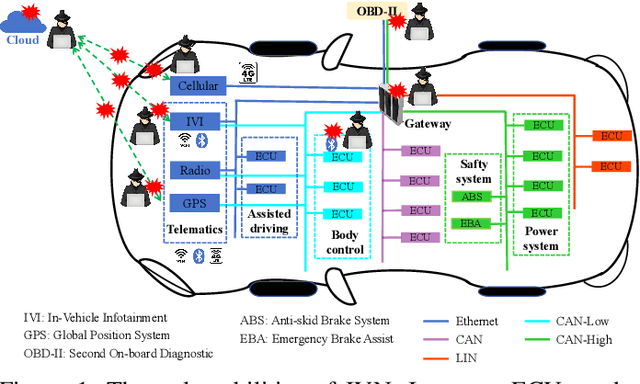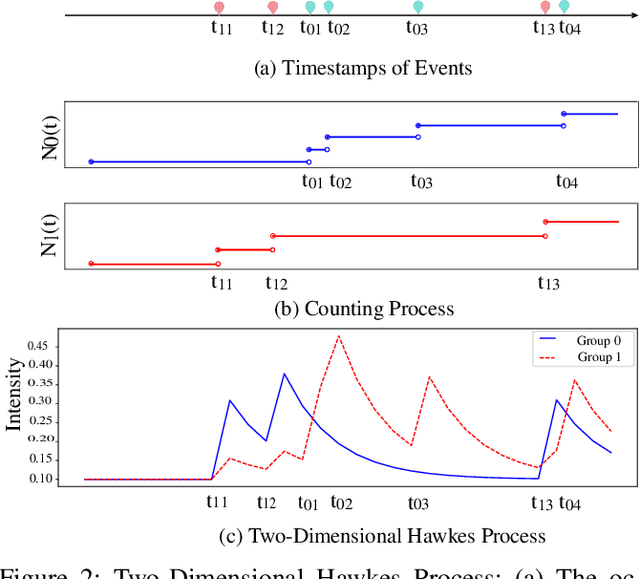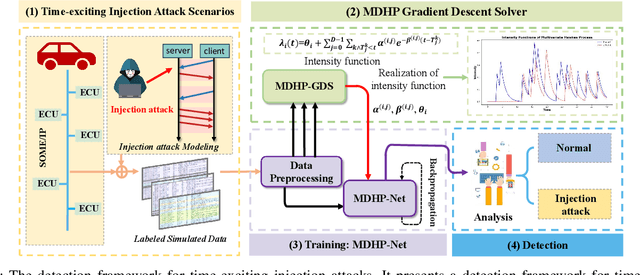Ruifeng Li
RealMirror: A Comprehensive, Open-Source Vision-Language-Action Platform for Embodied AI
Sep 18, 2025Abstract:The emerging field of Vision-Language-Action (VLA) for humanoid robots faces several fundamental challenges, including the high cost of data acquisition, the lack of a standardized benchmark, and the significant gap between simulation and the real world. To overcome these obstacles, we propose RealMirror, a comprehensive, open-source embodied AI VLA platform. RealMirror builds an efficient, low-cost data collection, model training, and inference system that enables end-to-end VLA research without requiring a real robot. To facilitate model evolution and fair comparison, we also introduce a dedicated VLA benchmark for humanoid robots, featuring multiple scenarios, extensive trajectories, and various VLA models. Furthermore, by integrating generative models and 3D Gaussian Splatting to reconstruct realistic environments and robot models, we successfully demonstrate zero-shot Sim2Real transfer, where models trained exclusively on simulation data can perform tasks on a real robot seamlessly, without any fine-tuning. In conclusion, with the unification of these critical components, RealMirror provides a robust framework that significantly accelerates the development of VLA models for humanoid robots. Project page: https://terminators2025.github.io/RealMirror.github.io
Convergent and divergent connectivity patterns of the arcuate fasciculus in macaques and humans
Jun 24, 2025Abstract:The organization and connectivity of the arcuate fasciculus (AF) in nonhuman primates remain contentious, especially concerning how its anatomy diverges from that of humans. Here, we combined cross-scale single-neuron tracing - using viral-based genetic labeling and fluorescence micro-optical sectioning tomography in macaques (n = 4; age 3 - 11 years) - with whole-brain tractography from 11.7T diffusion MRI. Complemented by spectral embedding analysis of 7.0T MRI in humans, we performed a comparative connectomic analysis of the AF across species. We demonstrate that the macaque AF originates in the temporal-parietal cortex, traverses the auditory cortex and parietal operculum, and projects into prefrontal regions. In contrast, the human AF exhibits greater expansion into the middle temporal gyrus and stronger prefrontal and parietal operculum connectivity - divergences quantified by Kullback-Leibler analysis that likely underpin the evolutionary specialization of human language networks. These interspecies differences - particularly the human AF's broader temporal integration and strengthened frontoparietal linkages - suggest a connectivity-based substrate for the emergence of advanced language processing unique to humans. Furthermore, our findings offer a neuroanatomical framework for understanding AF-related disorders such as aphasia and dyslexia, where aberrant connectivity disrupts language function.
SAFEFLOW: A Principled Protocol for Trustworthy and Transactional Autonomous Agent Systems
Jun 09, 2025Abstract:Recent advances in large language models (LLMs) and vision-language models (VLMs) have enabled powerful autonomous agents capable of complex reasoning and multi-modal tool use. Despite their growing capabilities, today's agent frameworks remain fragile, lacking principled mechanisms for secure information flow, reliability, and multi-agent coordination. In this work, we introduce SAFEFLOW, a new protocol-level framework for building trustworthy LLM/VLM-based agents. SAFEFLOW enforces fine-grained information flow control (IFC), precisely tracking provenance, integrity, and confidentiality of all the data exchanged between agents, tools, users, and environments. By constraining LLM reasoning to respect these security labels, SAFEFLOW prevents untrusted or adversarial inputs from contaminating high-integrity decisions. To ensure robustness in concurrent multi-agent settings, SAFEFLOW introduces transactional execution, conflict resolution, and secure scheduling over shared state, preserving global consistency across agents. We further introduce mechanisms, including write-ahead logging, rollback, and secure caches, that further enhance resilience against runtime errors and policy violations. To validate the performances, we built SAFEFLOWBENCH, a comprehensive benchmark suite designed to evaluate agent reliability under adversarial, noisy, and concurrent operational conditions. Extensive experiments demonstrate that agents built with SAFEFLOW maintain impressive task performance and security guarantees even in hostile environments, substantially outperforming state-of-the-art. Together, SAFEFLOW and SAFEFLOWBENCH lay the groundwork for principled, robust, and secure agent ecosystems, advancing the frontier of reliable autonomy.
UniMatch: Universal Matching from Atom to Task for Few-Shot Drug Discovery
Feb 18, 2025Abstract:Drug discovery is crucial for identifying candidate drugs for various diseases.However, its low success rate often results in a scarcity of annotations, posing a few-shot learning problem. Existing methods primarily focus on single-scale features, overlooking the hierarchical molecular structures that determine different molecular properties. To address these issues, we introduce Universal Matching Networks (UniMatch), a dual matching framework that integrates explicit hierarchical molecular matching with implicit task-level matching via meta-learning, bridging multi-level molecular representations and task-level generalization. Specifically, our approach explicitly captures structural features across multiple levels, such as atoms, substructures, and molecules, via hierarchical pooling and matching, facilitating precise molecular representation and comparison. Additionally, we employ a meta-learning strategy for implicit task-level matching, allowing the model to capture shared patterns across tasks and quickly adapt to new ones. This unified matching framework ensures effective molecular alignment while leveraging shared meta-knowledge for fast adaptation. Our experimental results demonstrate that UniMatch outperforms state-of-the-art methods on the MoleculeNet and FS-Mol benchmarks, achieving improvements of 2.87% in AUROC and 6.52% in delta AUPRC. UniMatch also shows excellent generalization ability on the Meta-MolNet benchmark.
Selective Kalman Filter: When and How to Fuse Multi-Sensor Information to Overcome Degeneracy in SLAM
Dec 23, 2024Abstract:Research trends in SLAM systems are now focusing more on multi-sensor fusion to handle challenging and degenerative environments. However, most existing multi-sensor fusion SLAM methods mainly use all of the data from a range of sensors, a strategy we refer to as the all-in method. This method, while merging the benefits of different sensors, also brings in their weaknesses, lowering the robustness and accuracy and leading to high computational demands. To address this, we propose a new fusion approach -- Selective Kalman Filter -- to carefully choose and fuse information from multiple sensors (using LiDAR and visual observations as examples in this paper). For deciding when to fuse data, we implement degeneracy detection in LiDAR SLAM, incorporating visual measurements only when LiDAR SLAM exhibits degeneracy. Regarding degeneracy detection, we propose an elegant yet straightforward approach to determine the degeneracy of LiDAR SLAM and to identify the specific degenerative direction. This method fully considers the coupled relationship between rotational and translational constraints. In terms of how to fuse data, we use visual measurements only to update the specific degenerative states. As a result, our proposed method improves upon the all-in method by greatly enhancing real-time performance due to less processing visual data, and it introduces fewer errors from visual measurements. Experiments demonstrate that our method for degeneracy detection and fusion, in addressing degeneracy issues, exhibits higher precision and robustness compared to other state-of-the-art methods, and offers enhanced real-time performance relative to the all-in method. The code is openly available.
MDHP-Net: Detecting Injection Attacks on In-vehicle Network using Multi-Dimensional Hawkes Process and Temporal Model
Nov 15, 2024



Abstract:The integration of intelligent and connected technologies in modern vehicles, while offering enhanced functionalities through Electronic Control Unit and interfaces like OBD-II and telematics, also exposes the vehicle's in-vehicle network (IVN) to potential cyberattacks. In this paper, we consider a specific type of cyberattack known as the injection attack. As demonstrated by empirical data from real-world cybersecurity adversarial competitions(available at https://mimic2024.xctf.org.cn/race/qwmimic2024 ), these injection attacks have excitation effect over time, gradually manipulating network traffic and disrupting the vehicle's normal functioning, ultimately compromising both its stability and safety. To profile the abnormal behavior of attackers, we propose a novel injection attack detector to extract long-term features of attack behavior. Specifically, we first provide a theoretical analysis of modeling the time-excitation effects of the attack using Multi-Dimensional Hawkes Process (MDHP). A gradient descent solver specifically tailored for MDHP, MDHP-GDS, is developed to accurately estimate optimal MDHP parameters. We then propose an injection attack detector, MDHP-Net, which integrates optimal MDHP parameters with MDHP-LSTM blocks to enhance temporal feature extraction. By introducing MDHP parameters, MDHP-Net captures complex temporal features that standard Long Short-Term Memory (LSTM) cannot, enriching temporal dependencies within our customized structure. Extensive evaluations demonstrate the effectiveness of our proposed detection approach.
Contextual Representation Anchor Network to Alleviate Selection Bias in Few-Shot Drug Discovery
Oct 29, 2024Abstract:In the drug discovery process, the low success rate of drug candidate screening often leads to insufficient labeled data, causing the few-shot learning problem in molecular property prediction. Existing methods for few-shot molecular property prediction overlook the sample selection bias, which arises from non-random sample selection in chemical experiments. This bias in data representativeness leads to suboptimal performance. To overcome this challenge, we present a novel method named contextual representation anchor Network (CRA), where an anchor refers to a cluster center of the representations of molecules and serves as a bridge to transfer enriched contextual knowledge into molecular representations and enhance their expressiveness. CRA introduces a dual-augmentation mechanism that includes context augmentation, which dynamically retrieves analogous unlabeled molecules and captures their task-specific contextual knowledge to enhance the anchors, and anchor augmentation, which leverages the anchors to augment the molecular representations. We evaluate our approach on the MoleculeNet and FS-Mol benchmarks, as well as in domain transfer experiments. The results demonstrate that CRA outperforms the state-of-the-art by 2.60% and 3.28% in AUC and $\Delta$AUC-PR metrics, respectively, and exhibits superior generalization capabilities.
Dual-Label Learning With Irregularly Present Labels
Oct 21, 2024Abstract:In multi-task learning, we often encounter the case when the presence of labels across samples exhibits irregular patterns: samples can be fully labeled, partially labeled or unlabeled. Taking drug analysis as an example, multiple toxicity properties of a drug molecule may not be concurrently available due to experimental limitations. It triggers a demand for a new training and inference mechanism that could accommodate irregularly present labels and maximize the utility of any available label information. In this work, we focus on the two-label learning task, and propose a novel training and inference framework, Dual-Label Learning (DLL). The DLL framework formulates the problem into a dual-function system, in which the two functions should simultaneously satisfy standard supervision, structural duality and probabilistic duality. DLL features a dual-tower model architecture that explicitly captures the information exchange between labels, aimed at maximizing the utility of partially available labels in understanding label correlation. During training, label imputation for missing labels is conducted as part of the forward propagation process, while during inference, labels are regarded as unknowns of a bivariate system of equations and are solved jointly. Theoretical analysis guarantees the feasibility of DLL, and extensive experiments are conducted to verify that by explicitly modeling label correlation and maximizing the utility of available labels, our method makes consistently better predictions than baseline approaches by up to a 10% gain in F1-score or MAPE. Remarkably, our method provided with data at a label missing rate as high as 60% can achieve similar or even better results than baseline approaches at a label missing rate of only 10%.
GNN-MolKAN: Harnessing the Power of KAN to Advance Molecular Representation Learning with GNNs
Aug 02, 2024



Abstract:Effective molecular representation learning is crucial for molecular property prediction and drug design. However, existing approaches struggle with limitations in insufficient annotations and suboptimal architecture design. For instance, Graph Neural Networks (GNNs) suffer from over-squashing, causing the loss of important structural details in molecules, thus impairing molecular representations. In this work, we propose a new class of GNNs, GNN-MolKAN and its augmented variant, GNN-MolKAN+, that integrate the Kolmogorov-Arnold Networks (KAN) architecture from AI + Science into GNNs to address these challenges. Additionally, we introduce Adaptive FastKAN (AdFastKAN), an advanced KAN that offers increased stability and speed, further enhancing the performance of standard GNNs. Notably, our approach holds three key benefits: 1) Superior Performance: GNN-MolKAN and GNN-MolKAN+ demonstrate superior prediction ability, robust generalization to unseen scaffolds, and versatile transferability across different GNN architectures. 2) Efficiency: These models require less computational time and fewer parameters while matching or surpassing the state-of-the-art (SOTA) self-supervised methods. 3) Few-shot Learning Ability: GNN-MolKAN demonstrates great potential in few-shot learning scenarios, achieving an average improvement of 6.97% across few-shot benchmarks. Overall, we validate our architecture on 6 classification datasets, 6 regression datasets, and 4 few-shot learning datasets, consistently achieving highly competitive results across all of them.
Physical formula enhanced multi-task learning for pharmacokinetics prediction
Apr 16, 2024



Abstract:Artificial intelligence (AI) technology has demonstrated remarkable potential in drug dis-covery, where pharmacokinetics plays a crucial role in determining the dosage, safety, and efficacy of new drugs. A major challenge for AI-driven drug discovery (AIDD) is the scarcity of high-quality data, which often requires extensive wet-lab work. A typical example of this is pharmacokinetic experiments. In this work, we develop a physical formula enhanced mul-ti-task learning (PEMAL) method that predicts four key parameters of pharmacokinetics simultaneously. By incorporating physical formulas into the multi-task framework, PEMAL facilitates effective knowledge sharing and target alignment among the pharmacokinetic parameters, thereby enhancing the accuracy of prediction. Our experiments reveal that PEMAL significantly lowers the data demand, compared to typical Graph Neural Networks. Moreover, we demonstrate that PEMAL enhances the robustness to noise, an advantage that conventional Neural Networks do not possess. Another advantage of PEMAL is its high flexibility, which can be potentially applied to other multi-task machine learning scenarios. Overall, our work illustrates the benefits and potential of using PEMAL in AIDD and other scenarios with data scarcity and noise.
 Add to Chrome
Add to Chrome Add to Firefox
Add to Firefox Add to Edge
Add to Edge